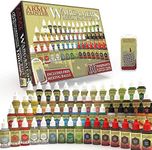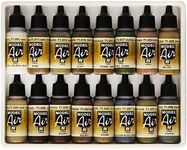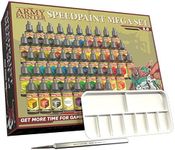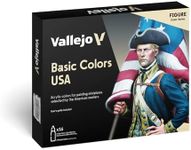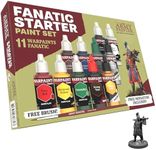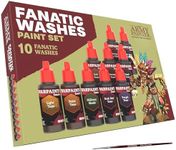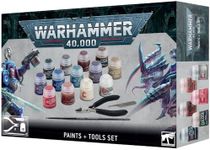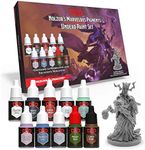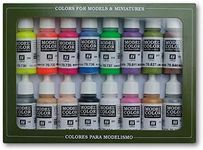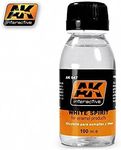Buying Guide for the Best Paints For Miniatures
Choosing paints for miniatures is an exciting part of the hobby, whether you're painting fantasy figures, model soldiers, or board game pieces. The right paint can make your miniatures look vibrant and detailed, and the process can be very enjoyable. When picking paints, it's important to consider how you'll use them, what kind of finish you want, and how easy they are to work with. Understanding the key specifications will help you select paints that match your skill level, painting style, and the results you want to achieve.Paint Type (Acrylic, Enamel, Oil)Paint type refers to the base and composition of the paint. Acrylic paints are water-based, dry quickly, and are easy to clean up, making them the most popular choice for miniatures. Enamel paints are oil-based, take longer to dry, and provide a durable finish, but require special thinners for cleanup. Oil paints are rarely used for miniatures but can be useful for certain effects. Beginners and most hobbyists will find acrylics easiest to use, while more advanced painters might experiment with enamels or oils for specific techniques.
Consistency (Thin, Medium, Thick)Consistency describes how thick or thin the paint is straight from the bottle or pot. Thin paints are good for layering and glazing, while thicker paints are better for base coating and dry brushing. Some paints are designed to be used straight away, while others may need to be thinned with water or medium. If you like to do fine detail work, look for paints with a smoother, thinner consistency. For coverage and texture, a medium or thicker paint might be better.
PigmentationPigmentation refers to how much color is in the paint and how well it covers the surface. Highly pigmented paints provide strong, vibrant colors and good coverage with fewer coats. Less pigmented paints may require more layers to achieve the desired color. If you want bright, bold colors or need to cover dark surfaces, choose paints with high pigmentation. For subtle effects or transparent layers, lower pigmentation can be useful.
Finish (Matte, Satin, Gloss)Finish is the look and feel of the paint once it dries. Matte finishes are flat and non-reflective, which is often preferred for miniatures as it shows details better. Satin finishes have a slight sheen, while gloss finishes are shiny and reflective. If you want your miniatures to look realistic and detailed, matte is usually best. For special effects or certain parts like armor or gems, satin or gloss can add interest.
Color RangeColor range is the variety of colors available in a paint line. Some brands offer a huge selection, while others focus on basic or themed colors. If you like to experiment or want to match specific themes, a wide color range is helpful. If you prefer to mix your own shades or only need a few basic colors, a smaller range may be enough.
Bottle Design (Dropper, Pot, Tube)Bottle design affects how easy it is to use and store the paint. Dropper bottles let you dispense small amounts and keep the paint from drying out. Pots are easy to dip your brush into but can dry out faster if left open. Tubes are less common but can be useful for certain techniques. If you want precision and less waste, droppers are ideal. If you like to work quickly or with larger brushes, pots might be more convenient.
Compatibility with Primers and SealersCompatibility means how well the paint works with the primers and sealers you use. Some paints adhere better to certain primers, and some finishes react differently to sealers. If you already have a favorite primer or sealer, check that your paint is compatible. This helps prevent issues like peeling or unwanted changes in finish.
